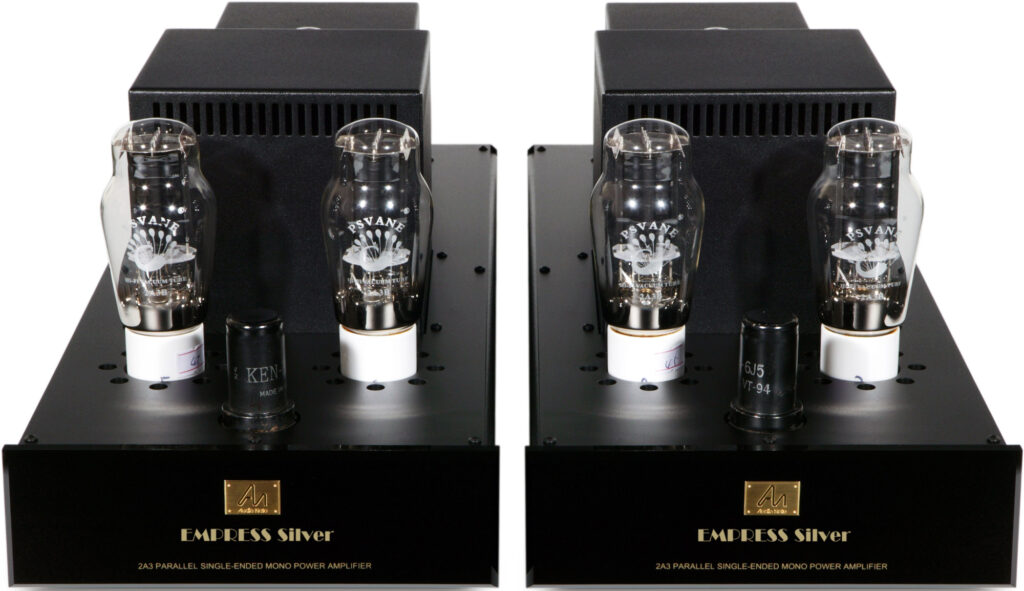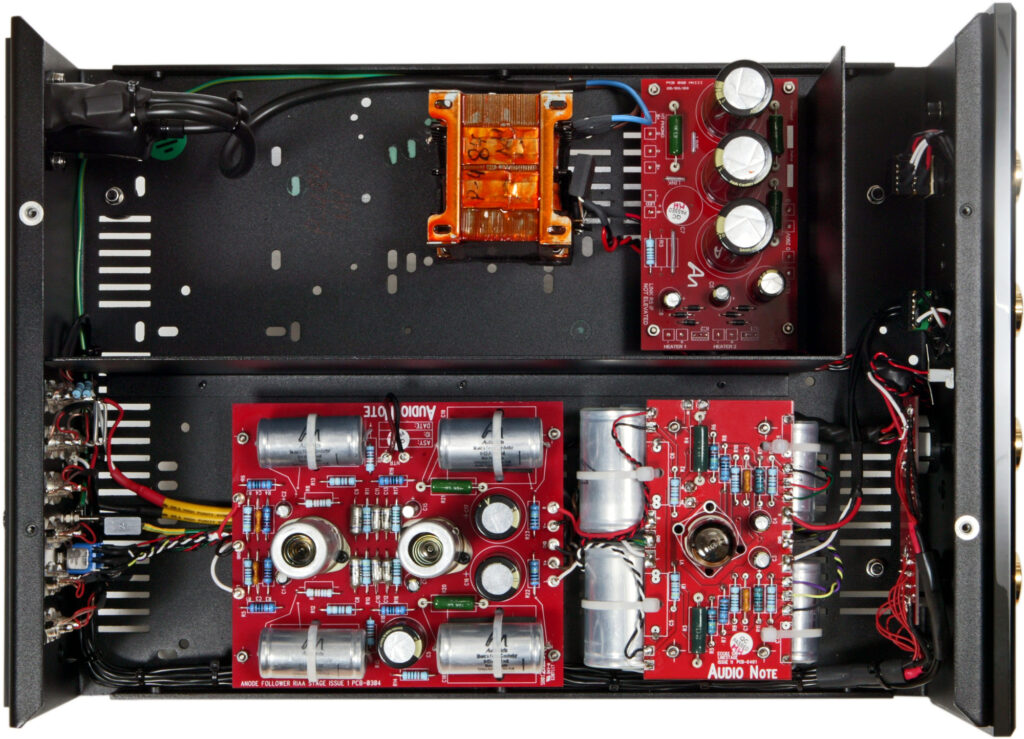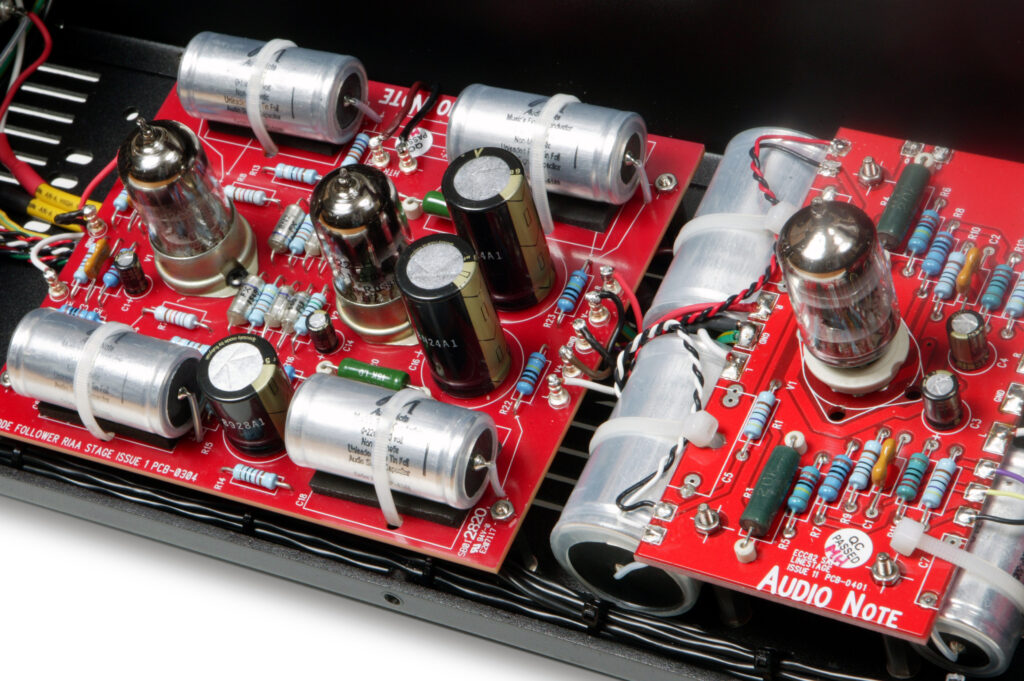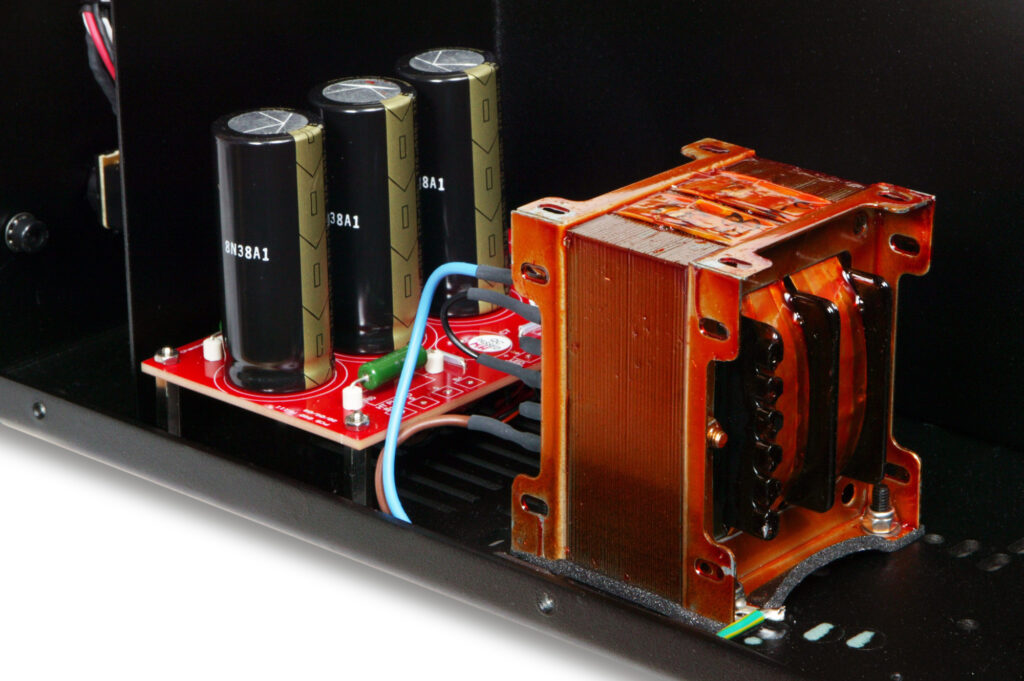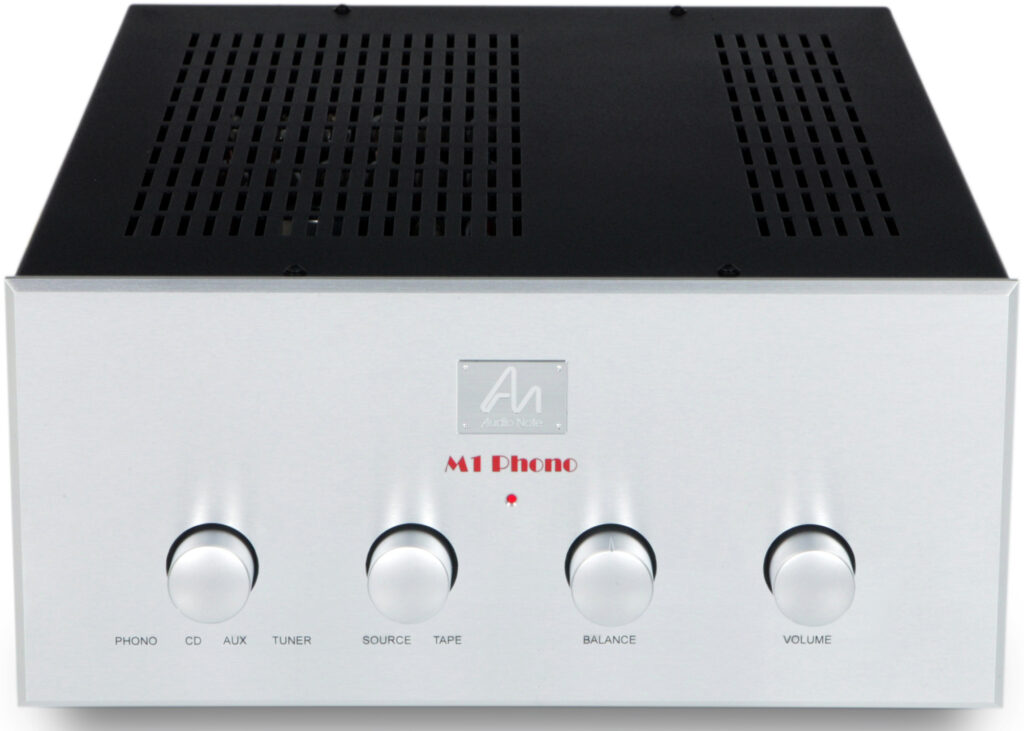I partnered the M1 to Audio Note’s Empress Silver parallel single-ended triode monoblocks. This is a considerable step up from the P1 SE, the “separate’ equivalent power amp section of the OTO. While the P1 SE and the OTO SE use EL84 output tubes for 10 watts per channel, the Empress Silver is a parallel single-ended 2a3 design outputting 8 watts per channel. The 2a3 amps are more upfront and I found them to be more powerful sounding than 300B amplifiers like the Quest Silvers or various EL84 amplifiers. Audio Note UK has a dizzying array of power amplifiers and monoblocks and they all have their strengths and weaknesses. Here in Hong Kong, dealers have described the 300B as a lady-like amplifier, beautiful and gentle and filled with lush ambiance. The 2a3 is more of a rocker and in your face and some have described it as a little too solid-state-like for their tastes. The Empress Silver 2a3 is more neutral than “pretty.” I like both approaches but as most of us are not millionaires we have to navigate carefully which single-ended tube sound we are after.
I have fielded e-mails from audiophiles asking me about which power amp to get and I can’t answer that except to say that if you listen to a lot of rock and pop the Empress is more exciting to listen to than comparable Quest 300Bs in my experience. If you want that lusher, softer, valve-like presentation you may want the 300B or even Audio Note Paladin 45 output tube, which I like but is limited to just 2 watts per channel.
With the M1 warmed up and ears now used to the sound of its presentation, I was impressed by the preamp’s low noise floor and its ability to get along with not only the Empress Silver monoblocks but also my KingKo KA101 Pro EL84 integrated (used as a power amp) and, perhaps most surprisingly, my Wyred 4 Sound mAmp monoblocks. This is important because a good preamp gives the listener a choice of power amps. A lot of audiophiles on forums own speakers that are “borderline” in terms of efficiency and sensitivity. Yes, a low-powered SET amp will drive an 87dB sensitive speaker rated at 4 ohms but the amplifier won’t want to play AC/DC or large-scale classical music. When you want to play and be truly beguiled by Eva Cassidy, then the Empress will give you that added bit of magic (or reveal the magic that is on the disc that other kinds of amplifiers may miss).
It’s also nice to have a 200+ watt power amplifier like the Wyred 4 Sound mAmp monoblocks to use when you want to get a little crazy. You can have the best of both worlds going with separates over an integrated amplifier. Ultimately, this is why I would prefer to go with an M1 preamp and have several options for power amps on hand versus going with the integrated amplifier that offers few to no upgrade paths.
So what does the M1 Phono Preamp sound like? Should it have a sound? What about people who say that “the best preamp is no preamp?” I read forum posters that view preamplifiers as some sort of bottleneck or unnecessary part of a stereo system. They hold the view that it is better to run directly from the source to a power amplifier or to use a passive gain stage. I view myself as Switzerland on the topic. If it can be demonstrated to sound better then it is better. However, I have never been all that convinced by passive preamplifiers. They have sounded somewhat thin to me, lacking weight and body. Is that sound more accurate? Is the tube preamp merely adding distortion and creating a sense of ambiance to sound fuller? This is a question audiophiles have been debating for decades on the forums.
I can’t answer that for you. I presume if you have gotten this far into this review then you probably lean to the notion that the ends justify the means. If the result is that the tube active preamp makes your recordings sound better and makes your music sound more vital and more “real” then that is the result. Tube amplifiers tend to measure differently than solid-state amplifiers and the answer is in those measurements, but I have generally felt that they are more beneficial to the manufacturer than to the consumer listening to the product; knowing that a tube amp has more Total Harmonic Distortion than a solid state amp doesn’t change the result of what happens when you listen.
With Audio Note what you won’t get is the stereotypical “tube warmth” that you might get from a Conrad-Johnson or some of the other more heavy-handed tube amplifiers that do sometimes sound more like a tube distortion buffer. I described the Audio Note OTO Phono SE as a darker-leaning or warm-sounding amplifier — more stereotypically valve sounding. What does all that mean? Well, when listening to Eva Cassidy’s Songbird album, the OTO and other “warmer” amplifiers will seemingly present more of the timbre on the guitar and present the room’s influence on the recording, that sensation of being a part of the space. And a great many audiophiles find this presentation to be wholly satisfying and organic. There is a reason the OTO has been selling for over 25 years and the EL84 output tube amp is so desirable over more powerful offerings from EL34 and KT88 options.
As good as this sound is, beguiling and glorious in fact, it is not without some weaknesses. The OTO isn’t as resolving or open as some other amplifiers. Nor is it particularly powerful compared to many other amplifiers. As I noted the M1 solves this; you can retain the OTO sound with the Audio Note P1 SE power amp — this is the power amp section of the OTO. You can also try other power amplifiers to bring a bigger, more open, more resolved sound on larger scale rock and orchestral pieces. A complaint some audiophiles have about single-ended triode and pentode SET amplifiers is that they can’t handle large-scale classical pieces, such as the Rite of Spring, or heavy metal because of limited power and bandwidth. It’s hard to argue when there are 2,000-watt amplifiers out there — they will play louder with more comfort. The separate preamp solves this — you can purchase a low power tube amp, even a single-ended triode, for beauty, delicacy and eloquence and also a big, rocking class A/B or D amplifier for when you want to knock out that loose tooth that is bothering you. Given that SS power amps are widely available on the used market and generally don’t hold their value very well, you should be able to find some sort of tooth loosening amplifier for a few hundred dollars.
As a result, the M1 is far more of a chameleon than I would have thought. Indeed, this is what you want in a preamp. It has the ability to sound noise-free and to still sound complete and with a slight warmth where the music sounds neutral but relaxed and still engaging. It’s not easy to put into words how well the M1 balances these traits and also how well it seems to get out of the way as if it indeed sounds like a straight wire with gain. Its transients are clean and crisp with a slight softness on top that will unlikely result in listening fatigue, but it’s open enough that it doesn’t make you think it is just a distortion buffer that homogenizes your music collection.
With some preamps, power amps, and integrated amplifiers, different music seems to sound as if it were all recorded in the same studio. With some passive preamps and some solid-state preamps, music seems to have a washed-out quality. Music can sound “crisp” and “brighter” and “leaner” on some of these amplifiers, and there is an appeal to this because it can sound more upfront and detailed. That type of sound is often mistaken for being “neutral” and “accurate”, but over many recordings this effect can seem to be missing a sense of completeness, as if one is not looking at a line but a series of dots placed closely together to look like a line.
The M1 Phono SE doesn’t completely get away from this either. It’s not a perfect product, but like the OTO, I think one of the great things about Audio Note as a company is that most of the weaknesses tend to be sins of omission. You don’t notice the weaknesses unless you compare them to considerably more expensive products, and if you just don’t do that, then living in ignorance will save you a lot of money. But we’re audiophiles and, of course, we must turn over the rock to hear what we’re missing. So what are you missing? Well, the M1 isn’t providing the layering in the recording or the bass weight and the overall grandeur of the performance that you get from the M3 or M6 preamps. Those preamps just sound more complete, more full-bodied, and just plain bigger. Dynamics on Lim Kek-Tjiang’s “Butterfly Lovers” has more nuance in quiet passages and can explode with more fury. It is highly engaging and beautiful with the M1 but perhaps otherworldly with the M6. Remember, however, that the M6 is otherworldly priced at something like eight times the price of the M1.
Comparing it to other preamps makes sense because we all seem to be in hurry to find winners and losers in some sort of battle. But I have found that it comes down to what exactly you want in tubes amplification. The M1, M3 and M6 I find to be on the more “honest” end of the tube preamp spectrum and the sound you get will depend a little more on the rest of the system. And they are designed to work with Audio Note UK components. I have auditioned a preamp from Melody Valve Audio (Pre -101D) that has that big tone, depth, and richness in spades. It falls more into the stereotypical “tube” sound, which it imparts on every recording. So the M1 (and some other tube preamps) will most assuredly seem more neutral and honest. That said, boy, the Melody sounded nice. Some folks will prefer those preamps that have oodles of warm and thick presentation even if they are a little less accurate. There is always a balance between truth and beauty.
The M1 Phono offers the kind of clear window to music reproduction that will place a lot of pressure on a lot of far more expensive preamps to justify their existence. Anyone who wants to “get into tubes” will find that the M1 is a truly outstanding place to start.
NEXT: Audio Note UK Empress Silver parallel single-ended triode monoblocks Review.
Review system:
Sources:
Audio Note TT3 Turntable with Arm 3(v2) and IQ3 MM Cartridge
Cambridge Audio CXC CD Transport
Audio Note DAC 0.1X
Line Magnetic 502CA DAC
Pre/Power amplifiers:
Wyred4Sound mAmp class D monoblock amplifiers
KingKo Ka 101 Pro (EL84) tube Integrated/Power amplifier
Audio Note Empress Silver (2a3) 8-watt per channel monoblocks
Audio Note M3 Phono Balanced Preamp
Audio Note M6 Phono Balanced Preamp
Loudspeakers:
Audio Note AN-E/SPx AlNiCo Hemp
Audio Note AN-K/SPe
Audio Note AX-Two
Rogers LS 5/9
Cables:
Audio Note ISIS Power cable modified power bar
Audio Note Lexus IC Cables and SPe speaker cables
Copy editor: Dan Rubin
- ← Previous page
- (Page 2 of 2)

